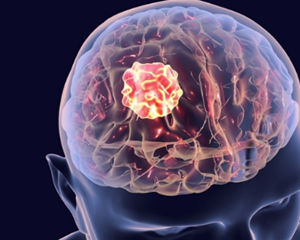But when the lab results came back 10 days later, the pathology report showed the tumor wasn't actually an ATRT at all; it was something far milder.
但10天后實(shí)驗室結(jié)果出來時,病理報告顯示腫瘤其實(shí)根本不是ATRT;而要溫和得多。
"It happened to be a germinoma," recalls Hoving, "and that could be treated very effectively with radiation and chemotherapy."
“它恰好是一種生殖細(xì)胞瘤,”霍文回憶道,“可以通過放療和化療非常有效地治療。”
He had made the best call he could with the limited information available: "I tried to do a radical resection with the best intentions, but in hindsight, I shouldn't have done that."
他利用有限的信息做出了最好的決定:“我本著最好的意圖嘗試進(jìn)行根治性切除術(shù),但事后看來,我不應(yīng)該這樣做。”
Hoving is now part of a research team at Princess Máxima that since summer 2023 has experimented with artificial intelligence to identify tumors in real time.
霍文現(xiàn)在是瑪西瑪公主小兒腫瘤中心研究團(tuán)隊的一員,自2023年夏季以來,這個團(tuán)隊一直在試驗人工智能來即時識別腫瘤。
The team is using an AI model that it's dubbed Sturgeon, which can categorize brain tumors with 90 percent accuracy in 40 minutes or less -- enough time for a surgeon to make an informed decision while the patient is under the knife.
該團(tuán)隊正在使用一種名為Sturgeon的人工智能模型,該模型可以在40分鐘或更短的時間內(nèi)以90%的準(zhǔn)確率對腦腫瘤進(jìn)行分類,這足以讓外科醫(yī)生在患者接受手術(shù)時做出明智的決定。
"Pathologists still review every single slide," says Bastiaan Tops, head of the child cancer pathology lab at Princess Máxima.
“病理學(xué)家仍然會審查每一張幻燈片,”瑪西瑪公主小兒腫瘤中心病理實(shí)驗室負(fù)責(zé)人巴斯蒂安·托普斯說。
The AI simply provides more information, another input.
人工智能只是提供更多信息,另一種輸入。

The project's genesis can be traced back to early 2022, when Tops caught wind that one of his colleagues on campus, Jeroen de Ridder, principal investigator and associate professor at the Center for Molecular Medicine,
該計劃的起源可以追溯到2022年初,當(dāng)時托普斯聽說他的一位校園同事、分子醫(yī)學(xué)中心首席研究員兼副教授杰倫·德·里德爾
was making strides in molecular sequencing using a new and relatively affordable device called a nanopore sequencer, which can read strands of DNA.
在分子測序方面取得了長足的進(jìn)步,使用的是一種新型的、相對便宜的設(shè)備,叫做納米孔測序儀,它可以讀取DNA鏈。
Tops had a light-bulb moment: What if they could combine this sequencer with some sort of advanced learning algorithm to radically speed up tumor identification?
托普斯突然靈光一現(xiàn):如果他們能夠?qū)y序儀與某種先進(jìn)的學(xué)習(xí)算法結(jié)合起來,從根本上加快腫瘤辨識的速度,會怎么樣?
Tops called de Ridder to see if he'd be interested in chatting.
托普斯打電話給德·里德爾,看他是否有興趣聊天。
"He said he saw some application of nanopore sequencing for ultrarapid diagnosis," remembers de Ridder.
“他說他看到了納米孔測序儀在超快速診斷中的一些應(yīng)用,”德·里德爾回憶道。
And since the campus is enviably small -- getting anywhere is a five-minute walk at most -- he strolled over to Tops's office.
由于校園小得令人羨慕--到任何地方最多步行五分鐘--他漫步到托普斯的辦公室。
"We sat together, and we started brainstorming what that might entail."
“我們坐在一起,開始集思廣益。”
The nanopore sequencer is a small device that starts at $2,000 -- cheap in medical terms, thus promising for hospitals in developing nations.
納米孔測序儀是一種起價2000美元的小型設(shè)備--從醫(yī)療角度來說很便宜,因此對發(fā)展中國家的醫(yī)院來說很有希望。
It looks like a stapler and hooks up to a laptop via USB; not futuristic-looking at all, in other words.
它看起來像訂書機(jī),通過USB連接到筆記型電腦;換句話說,根本不具有未來感。
It works by running a strand of DNA through a membrane that has tiny holes, or nanopores, inside it.
它的工作原理是讓一條DNA鏈穿過內(nèi)部有小孔或納米孔的膜。
Each nanopore is associated with an electrode and a sensor that records precise disruptions to the system's electrical current as the strand moves past the holes.
每個納米孔都與一個電極和一個感測器相關(guān)聯(lián),當(dāng)線束移動經(jīng)過孔時,感測器會記錄系統(tǒng)電流的精確中斷。
The result is a unique signature -- each strand's "squiggle" -- that can be decoded into a base sequence.
結(jié)果是一個獨(dú)特的簽名--每條鏈的“曲線”--可以被解碼成一個基本序列。
Simultaneously, researchers can deploy Sturgeon to identify what type of cancer is present.
同時,研究人員可以部署Sturgeon來識別存在哪種類型的癌癥。












